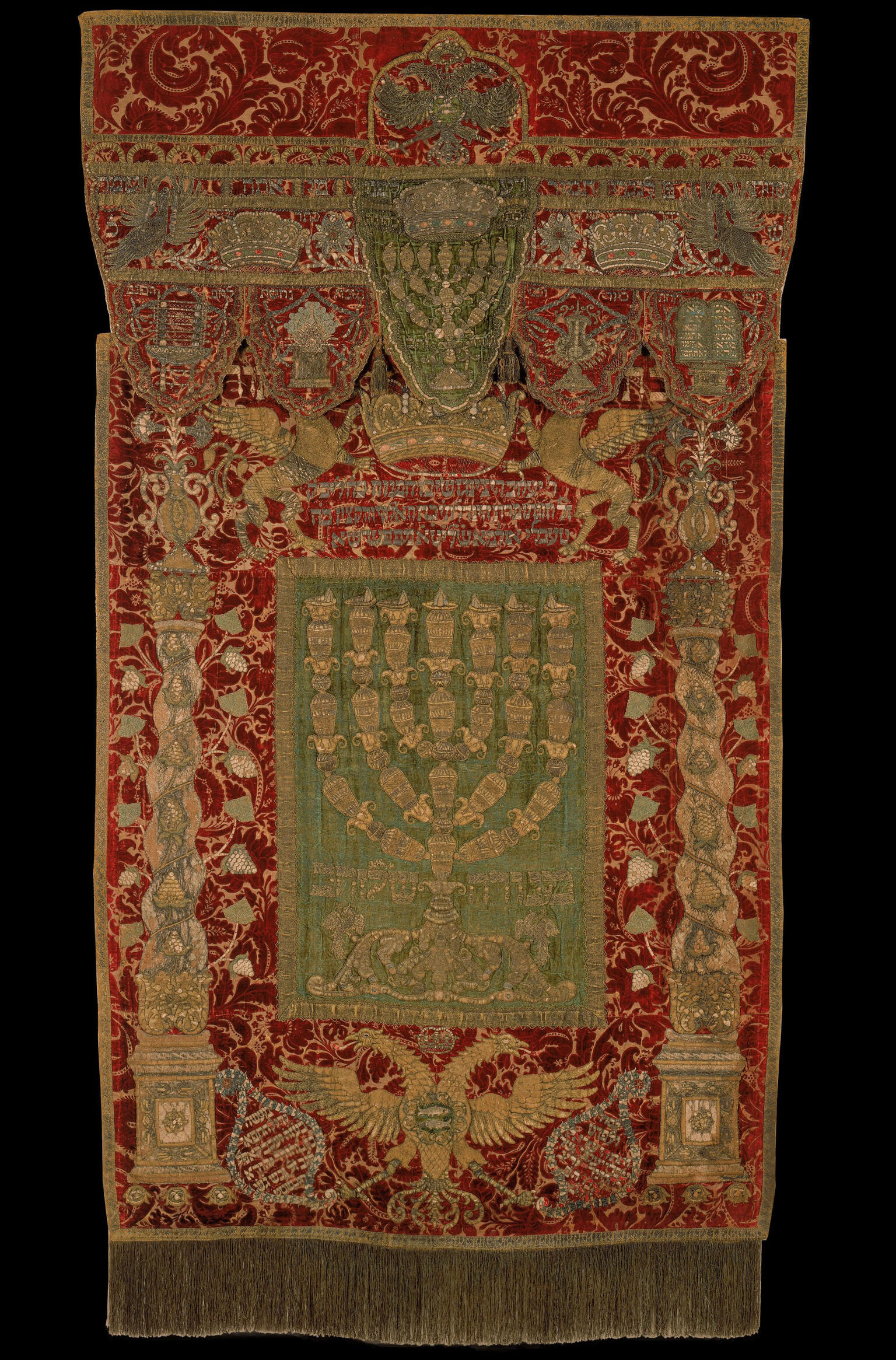Curtain and Valance for Torah Ark
Jacob Koppel Gans
1772–1773
Although few examples of the work of embroiderer Jacob Koppel Gans remain, he is best known for this Torah ark curtain and valance, dating to 1772 or 1773, made of velvet and embroidered with metallic and silk thread. The repetition of motifs on the valance and curtain, serving to visually integrate both pieces, is a stylistic detail original to Gans’s work. The artist’s curtain and valance are a rare example of signed Jewish ceremonial art, as Jewish artists of the period were not permitted to join guilds in German cities.
Credits
The Jewish Museum, New York. Gift of Dr. Harry G. Friedman.
Published in: The Posen Library of Jewish Culture and Civilization, vol. 6.
You may also like
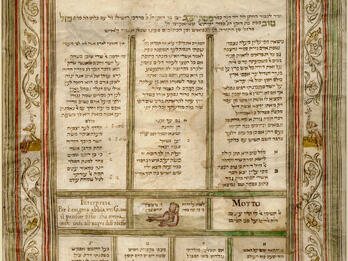
Wedding Riddle
This wedding riddle from Italy is written in Hebrew and Judeo-Italian. Wedding songs, sometimes performed by professional jesters, were traditional at Jewish weddings. Some had lyrics in the form of…
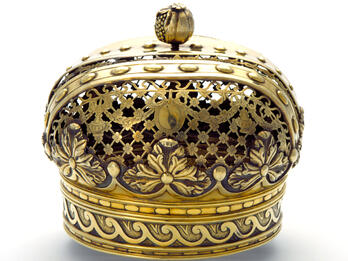
Torah Crown (Amsterdam)
The purpose of the Torah crown is visually to augment the status of the Torah scroll, emphasizing its importance and centrality to Jewish life. These magnificent silver ornaments are placed over the…
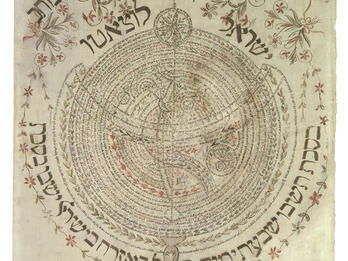
Sukkah Decoration
This micrographic drawing designed for a sukkah decoration is the best-known artwork of Israel David Luzzatto. Micrography, a form of drawing originally created by scribes, in which lines of miniature…
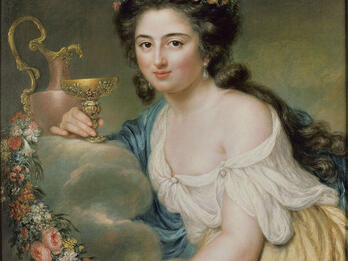
Henriette Herz as Hebe
Henriette de Lemos Herz (1764–1847) was a Berlin salon hostess famed for her beauty and literary engagement. She was highly educated, especially in ancient and modern languages. Following her marriage…
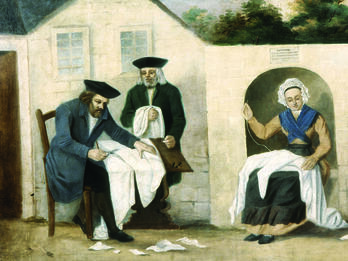
Jewish Burial Society: Sewing the Shrouds and The Washing of the Body
Women played key roles in preparing the deceased for burial. This painting shows women’s involvement in the ultimate act of generosity.
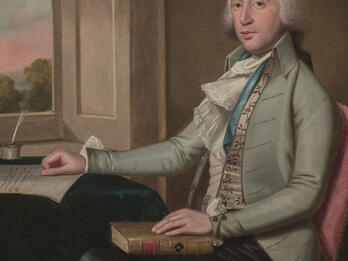
Portrait of Benjamin S. Judah
Benjamin S. Judah (1761–1831) was an influential businessman in New York City and Philadelphia who built his wealth on shipping contracts to and from the West Indies. Judah was bankrupted when Great…
Engage with this Source
Creator Bio
Jacob Koppel Gans
Jacob Koppel Gans was the son of an embroiderer, born in the Bavarian town of Hochstadt. Following in his father’s footsteps, Gans was himself a master embroiderer, and was active in the second half of the eighteenth century.
You may also like

Wedding Riddle
This wedding riddle from Italy is written in Hebrew and Judeo-Italian. Wedding songs, sometimes performed by professional jesters, were traditional at Jewish weddings. Some had lyrics in the form of…

Torah Crown (Amsterdam)
The purpose of the Torah crown is visually to augment the status of the Torah scroll, emphasizing its importance and centrality to Jewish life. These magnificent silver ornaments are placed over the…

Sukkah Decoration
This micrographic drawing designed for a sukkah decoration is the best-known artwork of Israel David Luzzatto. Micrography, a form of drawing originally created by scribes, in which lines of miniature…

Henriette Herz as Hebe
Henriette de Lemos Herz (1764–1847) was a Berlin salon hostess famed for her beauty and literary engagement. She was highly educated, especially in ancient and modern languages. Following her marriage…

Jewish Burial Society: Sewing the Shrouds and The Washing of the Body
Women played key roles in preparing the deceased for burial. This painting shows women’s involvement in the ultimate act of generosity.

Portrait of Benjamin S. Judah
Benjamin S. Judah (1761–1831) was an influential businessman in New York City and Philadelphia who built his wealth on shipping contracts to and from the West Indies. Judah was bankrupted when Great…


